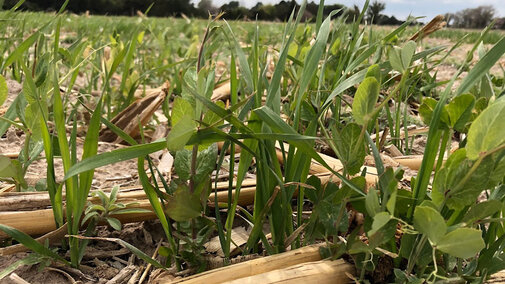The focus of the Tuesday, April 30 Cover Crops Field Day at Haskell Ag Lab near Concord, Nebraska is on learning about fall-planted cover crops tailored to diverse management goals. The field day will feature guided tours through three research trials, showcasing the latest findings and practical insights into cover crop management and benefits.
The program kicks off at 1 p.m. with an in-depth look at the USDA NRCS-funded research plots dedicated to evaluating the fertilizer N equivalence values of cereal rye cover crops. This research is conducted in the 39-year long-term tillage, nitrogen rate, and crop rotation plots. The tour will highlight the differences cover crops make across various treatments, alongside a comprehensive demonstration of the data collection process aimed at determining the N equivalence of cover crops.

The second stop features another USDA NRCS-funded initiative with a review of cover crop varieties (rye, triticale, wheat, barley, oats, hairy vetch, brassicas and mixes). Attendees will learn to identify cover crop species and understand their growth stages. Discussion will focus on setting realistic goals and performance expectations for different species, accompanied by an overview of data collection efforts assessing cover crop performance.
The final stop will introduce participants to USDA NIFA-funded study plots concentrating on the integrated use of cover crop, mulch and manure management strategies to mitigate nitrate leaching in cornfields. This session will offer insights into the techniques employed for collecting water samples to gauge nitrate-leaching, as well as comprehensive efforts in gathering soil health data.
This field day provides an opportunity to learn about leading research and to engage with experts in the field. Refreshments provided; the field day concludes at 3 p.m. The University of Nebraska Haskell Ag Lab is located at 57905 866 Rd., Concord, Nebraska.
There is no fee to attend, but please pre-register by Monday, April 29.
The field day is sponsored by Nebraska Extension.
For more information contact Nebraska Extension Educator Katja Koehler-Cole, 402-504-1016, or Javed Iqbal, Nebraska Extension nutrient management and water quality specialist/extension specialist, 402-472-2811.

